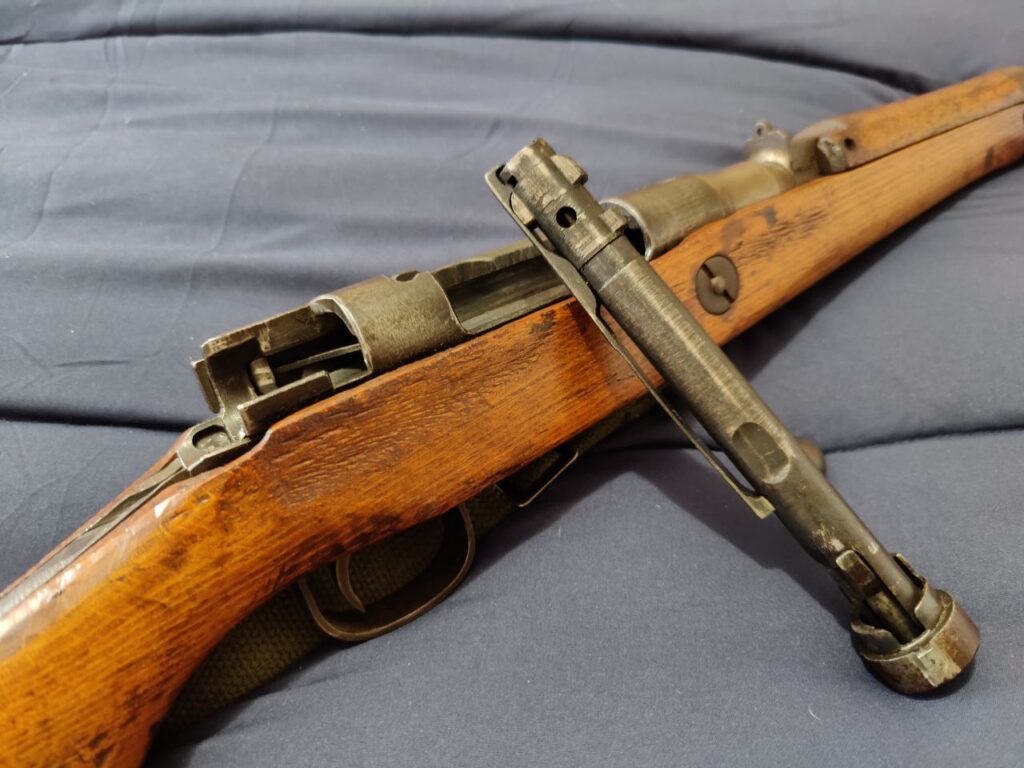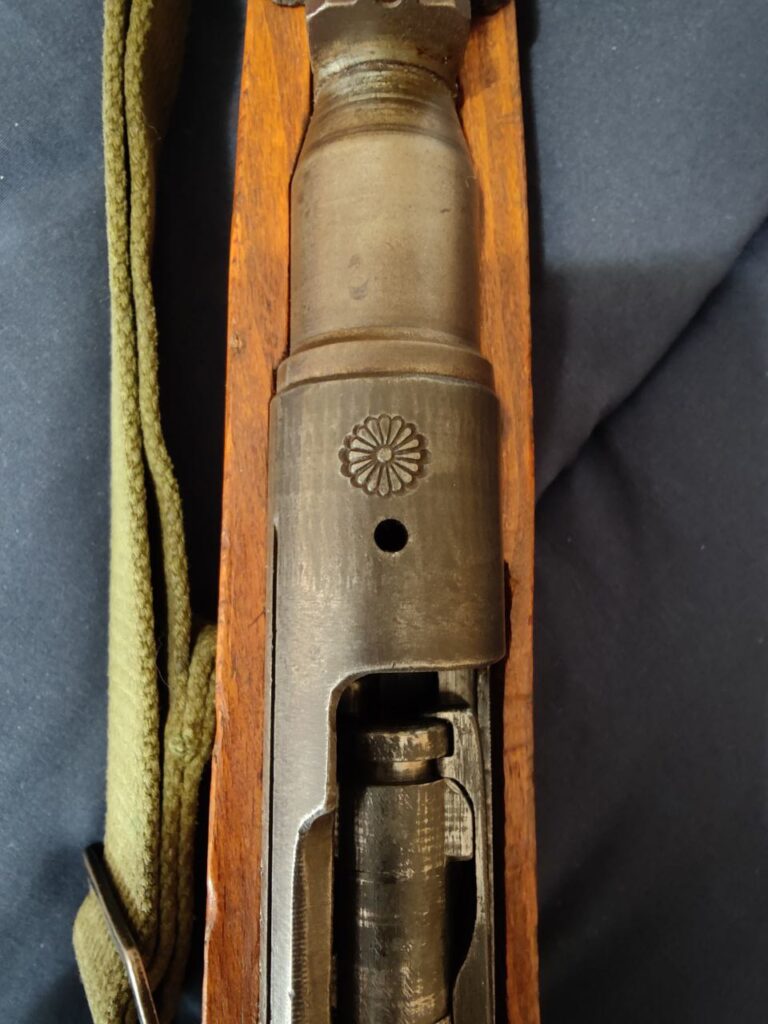Check Out This Gun: Last-Ditch Type 99

Introduction
During my segment at the end of yesterday evening’s episode of Gun Owners Radio, the discussion turned toward the Imperial Japanese Army’s standard long arm during World War II: the Type 99. I happen to have a particularly interesting example of the Type 99 in my own collection, so I thought I’d write a quick blog post to elaborate on what we discussed on the radio yesterday.
The Name
Most people refer to Japanese bolt-action service rifles collectively as “Arisaka” rifles, but only the Type 30 was actually designed by Nariakira Arisaka. Kijirō Nambu designed the later WWI-era Type 38, from which the Type 99 is descended. Every piece of Imperial Japanese military equipment was given a two-digit numerical designation according to the year it was adopted, but two different calendars were used. The Type 38, for example, was named after the year of the current era; it was adopted in 1906, the 38th year of Emperor Meiji’s reign. Beginning in the late 1920s, the Imperial Japanese military began using a different system based on the imperial year, starting with the foundation of the Japanese state in 660 BCE according to legend. The Type 99 was adopted in 1939, which corresponds to the year 2599 on the imperial calendar.
General Description
Although adopted in a traditional long rifle configuration, the general production Type 99 is a short rifle more typical for the era. The rifle feeds 5 rounds of 7.7×58mm Japanese from a fixed double-stack magazine. Authoritative sources quote the weight at between 8.1 and 8.4 pounds with a 26” barrel and 44” overall length, but that weight figure is highly variable depending on accessories. Early examples were fitted with a folding wire monopod, a sliding dust cover, and an elaborate anti-aircraft volley sight that all add weight and mechanical complexity. As the war dragged on, increased demand and material shortages induced the factories to skip these fancy and largely superfluous features so they could crank out more rifles. My example tips the scale at 8.4 pounds as a stripped-down late-war rifle.
Why “Last-Ditch?”
Production standards progressively declined as the tide of war turned against Japan. It wasn’t just the fancy sights and monopod that were excluded on late-war Type 99s; depending on the production year, a rifle might lack even some basic features. These so-called “last-ditch” weapons are substantially less valuable due to their poor workmanship, but that crudeness is exactly why I find mine so fascinating. As near as I can tell based on its receiver markings, my Type 99 is a Nagoya Arsenal Series 8, meaning it rolled off the production line in May of 1944. The Japanese Empire had just suffered a crushing defeat at Eniwetok, losing their last foothold in the Marshall Islands, and were losing heavily in New Guinea. The Americans were preparing for a major offensive in the Marianas in the east; the Australians and New Zealanders were bombing with impunity in the south; and the British, supported by overseas colonial and Republican Chinese forces, were tearing through Burma in the west.
My rifle was produced under dire circumstances by a decaying empire embattled on three fronts. The Imperial Japanese Army was by this point suffering from debilitating supply shortages as it threw wave after wave of conscripts into desperate delaying actions in the overseas colonial territories. Any weapon would suffice. Instead of the complicated anti-aircraft rear sight or even a simple adjustable leaf, the shooter is forced to make do with the bare minimum: a hole drilled in a scrap of sheet metal welded to the receiver. A proper buttplate would have consumed steel and labor, so the stock instead ends with a thin strip of wood attached with a trio of nails. The receiver and bolt body are rough with tool marks; to machine those surfaces smooth costs valuable time and doesn’t improve the mechanical functioning of the weapon. In short, my last-ditch Type 99 is a crudely made example of an inherently excellent rifle.
The ’Mum
Imperial Japanese small arms were all marked with a floral seal representing the Chrysanthemum Throne and by extension the Empire itself. Most Japanese war surplus brought into the United States bear a large and unsightly blemish where the chrysanthemum was defaced or removed. Most sources report that this was done by the surrendering troops as a matter of honor, to prevent property marked with the emperor’s seal from falling into enemy hands. Mine is made less common and significantly more desirable by the presence of an intact chrysanthemum, referred to by collectors as the “’mum,” on its receiver. This suggests that a soldier or Marine pulled it from the hands of a fallen foe and survived long enough to bring it stateside as a souvenir. The cotton web sling you see on the left side isn’t standard—it most likely came from an M1, possibly added by the same G.I. who brought this rifle back from the Pacific theater.

